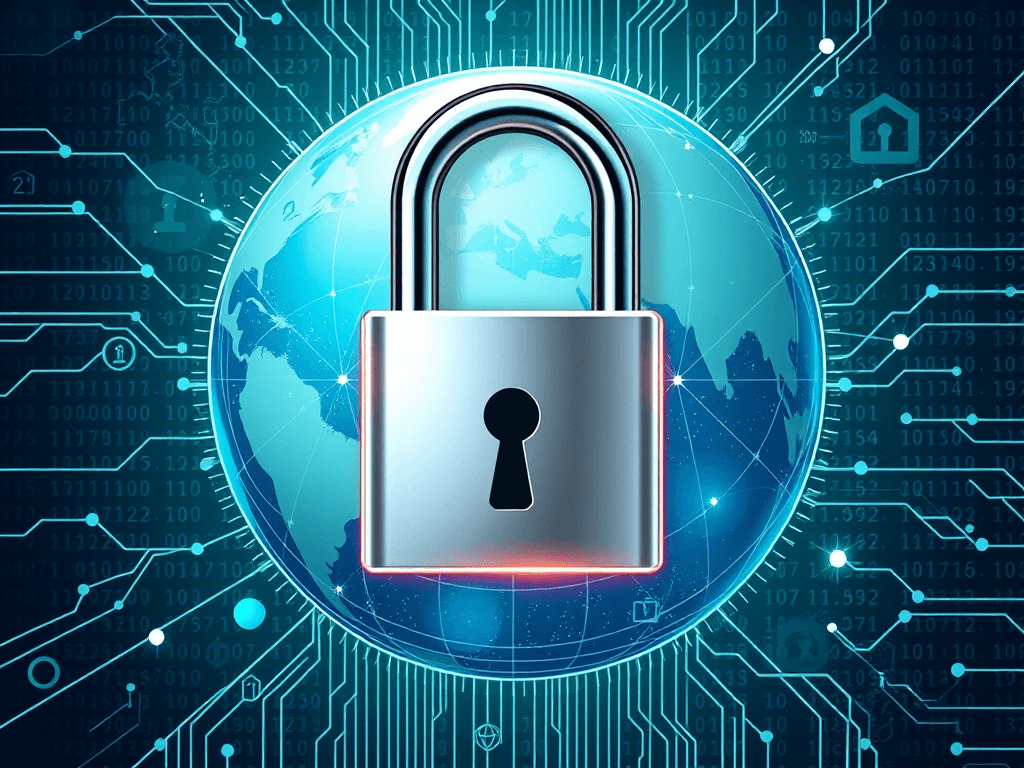In today’s digital age, cybersecurity for small businesses is no longer optional—it’s a necessity. Shockingly, 60% of small businesses close their doors within six months of suffering a cyberattack , according to the National Cyber Security Alliance . For small business owners, this statistic isn’t just alarming; it’s a wake-up call. While headlines often focus on high-profile breaches involving multinational giants, small business cyberattacks are becoming increasingly common. In fact, the Verizon 2022 Data Breach Investigations Report revealed that 43% of cyberattacks specifically target small businesses . This trend underscores the urgent need for proactive measures. In this article, we’ll explore why small businesses are so vulnerable, the types of threats they face, and actionable steps to protect your company from devastating consequences.
2. Why Small Businesses Are Prime Targets
2.1 Limited Resources
Small businesses typically operate with tight budgets and minimal staff, leaving little room for dedicated IT teams or advanced cybersecurity tools. Unlike large corporations that can afford cutting-edge firewalls and intrusion detection systems, many small businesses rely on basic antivirus software—sometimes not even updated regularly. According to the IBM 2022 Cost of a Data Breach Report , the average cost of a breach for small businesses is $108,000 , a figure that can cripple operations overnight. Without proper cybersecurity for small businesses , these vulnerabilities become easy entry points for attackers.
2.2 Valuable Data
Despite their size, small businesses handle sensitive information such as customer credit card details, employee records, and intellectual property. Hackers recognize the value of this data, which can be sold on the dark web or used in supply chain attacks against bigger organizations. For example, a local retail store might unknowingly expose its customers’ payment information to fraudsters through an unsecured point-of-sale system. According to the Federal Communications Commission (FCC) , over 80% of small businesses process some form of personally identifiable information (PII) , making them attractive targets for small business cyberattacks .
2.3 Supply Chain Vulnerabilities
Many small businesses act as vendors, suppliers, or service providers to larger companies. Cybercriminals understand this interconnectedness and target smaller entities as entry points into more secure networks. A breach at a small supplier could give attackers access to the client organization’s confidential data, amplifying the impact of the attack. The Cybersecurity & Infrastructure Security Agency (CISA) warns that attackers frequently exploit weak links in supply chains, particularly among small businesses lacking robust cybersecurity for small businesses .
2.4 Human Error
Employees are often the weakest link in any cybersecurity strategy. Untrained staff members may fall prey to phishing scams, reuse weak passwords across multiple accounts, or inadvertently download malicious software. According to KnowBe4 , human error contributes to 90% of successful cyberattacks . Without proper education, these mistakes can open the door to costly breaches, highlighting the importance of implementing effective cybersecurity tips for small businesses .
3. Common Cyber Threats Facing Small Businesses
3.1 Phishing Attacks
Phishing remains one of the most prevalent cyber threats. These deceptive emails mimic legitimate communications, tricking recipients into revealing login credentials or downloading malware. For instance, a fake email claiming to be from a bank or vendor might prompt employees to click on a malicious link. According to the Verizon 2022 Data Breach Investigations Report , phishing accounted for nearly 30% of all breaches in 2022 . Small businesses are particularly susceptible due to a lack of employee training and awareness, emphasizing the need for cybersecurity for small businesses .
3.2 Ransomware
Ransomware encrypts critical files, rendering them inaccessible until a ransom is paid—usually in cryptocurrency. Small businesses are particularly vulnerable because they often lack robust backup systems. The average cost of a ransomware attack on a small business exceeds $100,000 , excluding operational downtime. A report by Sophos found that 73% of ransomware victims are small businesses , highlighting the disproportionate impact on this sector. To mitigate these risks, how to protect small businesses from cyber threats must be a top priority.
3.3 Malware and Credential Theft
Malware infections occur when users interact with compromised websites, download infected files, or use outdated software. Once inside a network, malware can steal credentials, spy on activities, or spread to other devices. Weak or reused passwords exacerbate this risk, making it easier for attackers to gain unauthorized access. According to CISA , unpatched software vulnerabilities account for 60% of successful malware infections . Implementing cybersecurity solutions for small businesses can help prevent these incidents.
3.4 Distributed Denial-of-Service (DDoS) Attacks
DDoS attacks flood a business’s servers with overwhelming traffic, causing websites and services to crash. While less common than phishing or ransomware, DDoS attacks can cripple operations by preventing customers from accessing online platforms. For e-commerce businesses, this disruption translates directly into lost revenue. A study by Kaspersky Lab estimated that the average DDoS attack costs small businesses approximately $120,000 . To combat such threats, cybersecurity for small businesses must include robust network defenses.
4. The Impact of Cyberattacks on Small Businesses
The fallout from a cyberattack extends far beyond immediate financial losses:
- Financial Consequences : Stolen funds, regulatory fines, and expenses related to removing threats and restoring systems add up quickly. According to the IBM 2022 Cost of a Data Breach Report , the average total cost of a breach for small businesses is now $108,000 —a figure that continues to rise annually.
- Reputational Damage : Customers lose trust after a breach, leading to decreased sales and difficulty retaining clients. A survey by the National Cyber Security Alliance found that 60% of consumers would stop doing business with a company that experienced a data breach .
- Operational Disruptions : Attacks like ransomware or DDoS force businesses offline, halting productivity and frustrating stakeholders. For example, a ransomware attack on a small medical clinic in Florida resulted in weeks of downtime, during which patients were unable to access critical care.
- Long-Term Effects : Many small businesses struggle to recover. As mentioned earlier, 60% fail within six months of an attack , underscoring the importance of preparation and resilience. This highlights why cybersecurity for small businesses is critical for long-term success.
5. How Small Businesses Can Stay Safe
Protecting your business doesn’t require a massive budget—it starts with smart practices and consistent vigilance.
5.1 Employee Training
Educating your team is one of the most effective ways to reduce risk. Conduct regular training sessions on recognizing phishing attempts, creating strong passwords, and practicing safe browsing habits. Tools like KnowBe4 offer affordable solutions tailored for small businesses, helping them simulate real-world phishing scenarios and track employee progress. Investing in cybersecurity tips for small businesses ensures your workforce becomes a strong line of defense.
5.2 Risk Assessments
Regularly evaluate your network and systems for vulnerabilities. If you use cloud-based tools, consult with your provider to assess potential risks. Organizations like the National Institute of Standards and Technology (NIST) provide free frameworks to guide these assessments. For example, NIST’s Small Business Cybersecurity Corner offers step-by-step guides on implementing basic security controls.
5.3 Implement Strong Access Controls
Restrict access to sensitive data based on roles and responsibilities. Enable multi-factor authentication (MFA) wherever possible to add an extra layer of protection. According to Microsoft , MFA blocks 99.9% of account compromise attempts , making it one of the most effective safeguards available. Incorporating cybersecurity solutions for small businesses like MFA can significantly reduce risks.
5.4 Keep Software Updated
Outdated software is a common entry point for attackers. Ensure all operating systems, applications, and plugins are patched regularly. Automating updates can help minimize oversight. According to CISA , applying patches within 48 hours of release reduces vulnerability exposure by 85% .
5.5 Backup Critical Data
Automated backups are essential for mitigating the damage caused by ransomware or hardware failures. Store backups in secure locations—both offline and cloud-based—and test them periodically to ensure they’re functional. A study by Acronis found that 30% of businesses without reliable backups fail to recover from ransomware attacks . This reinforces the importance of cybersecurity for small businesses in safeguarding critical data.
5.6 Install Firewalls and Antivirus Software
Basic tools like firewalls and antivirus programs form the foundation of your cybersecurity strategy. They monitor incoming traffic and detect malware before it infiltrates your network. Solutions like Norton and McAfee offer affordable options designed specifically for small businesses.
5.7 Develop an Incident Response Plan
Prepare for the worst by outlining clear steps to take during a breach. Include procedures for containment, recovery, and communication with affected parties. The FCC’s Cybersecurity Planning Guide provides templates to help small businesses create comprehensive response plans.
6. Case Study: The Cost of Neglect
Consider the case of a small law firm in Chicago that fell victim to a ransomware attack in 2021. The firm failed to update its software regularly and lacked proper backups. When hackers encrypted their client files, they demanded $50,000 in Bitcoin for decryption keys. Unable to pay, the firm lost crucial documents and eventually shut down due to reputational damage. This scenario highlights the importance of proactive measures like patch management and data backups, reinforcing the need for cybersecurity for small businesses .
7. Conclusion
Small businesses are attractive targets for cybercriminals due to limited resources, valuable data, and supply chain connections. However, with the right strategies, you can significantly reduce your vulnerability. From educating employees to implementing strong access controls and developing incident response plans, every step counts toward safeguarding your enterprise.
Investing in cybersecurity for small businesses isn’t just about avoiding costs—it’s about ensuring long-term success. Don’t wait until it’s too late. Assess your current security posture today and implement the steps outlined above to protect your business from cyber threats. For further guidance, check out resources like the NIST Small Business Cybersecurity Corner or the FCC’s Cybersecurity Planning Guide .

















Your blog post was really enjoyable to read, and I appreciate the effort you put into creating such great content. Keep up the great work!